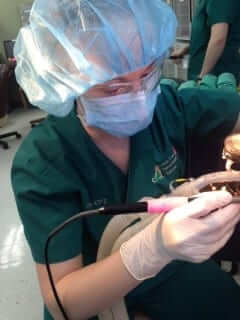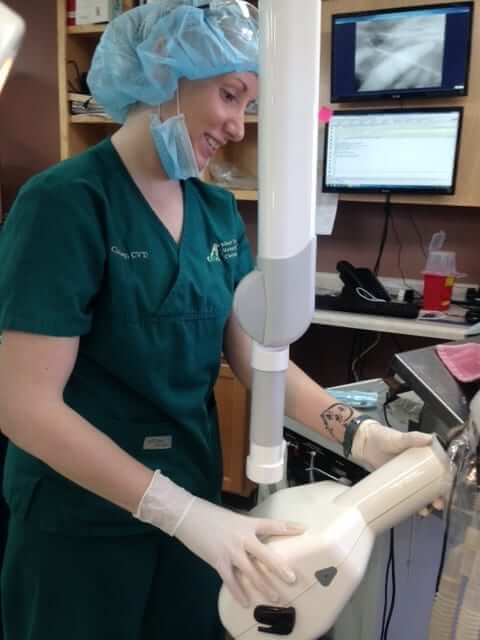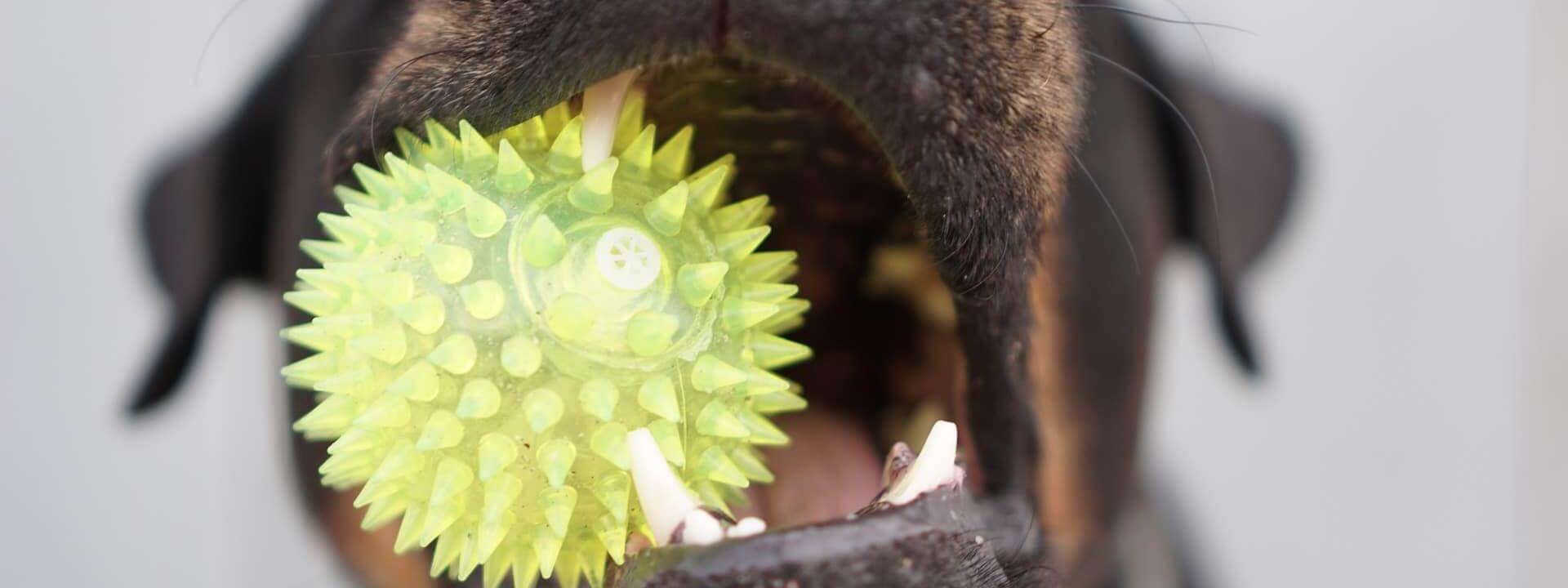

What is the “comprehensive 12-step teeth cleaning”?
1) Pre-surgical exam and consultation with a doctor
2) Pre-medication/pain relief before anesthesia (we encourage you to be present)
3) Ultrasonic cleaning using chlorhexidine (antiseptic rinse)
4) Hand scaling
5) Subgingival curettage (under gum debridement if advanced disease)
6) Root planing (if advanced disease)
7) Slow speed polishing
8) Complete oral charting
9) Oral Exam by a doctor (including oral cancer)
10) Fluoride application
11) Oravet ® barrier sealant applied
12) Personalized Dental home care plan
NOTE: Steps 3 thru 11 and dental X-rays (see below) can only be done thoroughly and safely while under general anesthesia.
Virtually every board-certified veterinary dentist agrees that this 12-step approach (including dental x-rays) will detect the most problems and is preferred. This is supported by the AAHA dentistry guidelines.
Are dental x-rays really important?
• Over 25% of dogs with normal oral exams have 1 or more problems that are only evident on radiographs
• Over 50% of cats the age of 5 or older have abnormal x-rays.
• All chipped and discolored teeth may have abscesses.
• Before any teeth are removed oral pathology needs to be identified.
• Missing teeth can develop bone destructive cysts.
• A “look into the future” gives us the ability to prevent unnecessary emergency dental visits or painful episode.
What “surprises” can be found during a cleaning?
• Deep periodontal pockets
• Missing teeth (dogs should have 42 and cats 30)
• Chipped or fractured teeth
• Resorptive lesions
• Apical abscesses
• Malformed teeth
• Discolored teeth
Many of these teeth can be saved by applying sealants, below gum time released antibiotics (perioceutic), performing a root canal (if an important tooth) or extraction via oral surgery techniques. These decisions will be made on a tooth by tooth basis fully involving you in the decision-making process.
What “surprises” can be found during a cleaning?
• Deep periodontal pockets
• Missing teeth (dogs should have 42 and cats 30)
• Chipped or fractured teeth
• Resorptive lesions
• Apical abscesses
• Malformed teeth
• Discolored teeth
Many of these teeth can be saved by applying sealants, below gum time released antibiotics (perioceutic), performing a root canal (if an important tooth) or extraction via oral surgery techniques. These decisions will be made on a tooth by tooth basis fully involving you in the decision-making process.
How does WTVC address concerns about pain control?
• Local blocks
• Non-steroidal anti-inflammatories (NSAIDS) like Rimadyl, Previcox, and Metacam
• Narcotic pain injections
• Constant assessment (before, during & after the procedure)
• At home pain relievers
Why is dentistry different between dog breeds?
WTVC practices breed specific dentistry (the following breeds need a different dental prevention and treatment focus)
- Retrievers (chipped teeth, discolored teeth)
- Pugs, Bostons, boxers, Shihtzus, Lhasas, Yorkshire terriers, bulldogs (missing teeth, crowded, partially erupted, deciduous canine teeth)
- All small dogs less than 20 lbs (prone to periodontitis & teeth loss because of thin bone)
- Greyhounds (prone to periodontitis)
- Brachycephalic (short-nosed) breeds have slightly higher anesthetic risk
How do we address anesthetic safety at our clinic?
• Our staff is well trained to be able to safely induce & monitor anesthesia
• We have “state of the art” monitoring and warming units
• We follow AAHA and AVDC protocols
• Drs & Certified veterinary technicians work as a team
• We place IV catheters in all pets
• We practice balanced anesthesia by using pre-emptive and comprehensive pain relief using local blocks & premeds to lower induction & maintenance amounts of inhaled anesthetics.
We use VetDar a digital anesthesia monitoring program on all patients
Note: “Sedation dentistry” does NOT allow the complete visualization, charting and staging/documentation using x-rays that can be obtained by our 12-step cleaning. Placement of an endotracheal tube is paramount for a thorough cleaning and anesthetic safety.
We have a board-certified anesthesiologist available (by appt) for high risk, long or complicated anesthesia or just for extra “peace of mind.” Please ask for details.
Why does it cost more than my teeth cleaning?
The primary difference is the use of anesthesia and the additional expense of that monitoring and use of drugs that are not typically necessary in human dentistry. Pets can’t and simply won’t allow the necessary procedures while awake.
To control costs…..the early preventative approach is also the most cost-effective approach. Grade 1 & 2 dental cleanings typically cost $150 to $250 but Grade 3 & 4 stages can be from $500 to over $1000 to include the full mouth radiographs, oral surgery, anesthesia and pain medications it takes when a disease is advanced.

